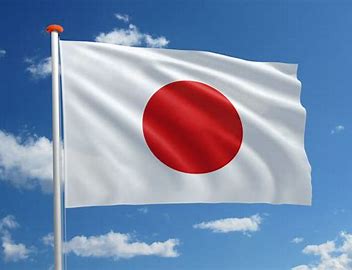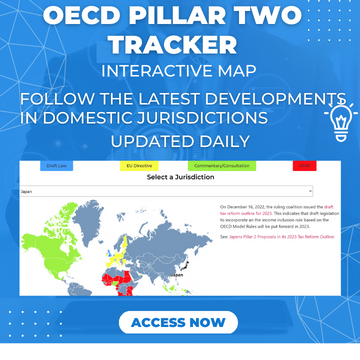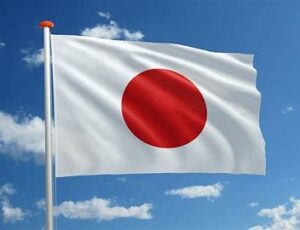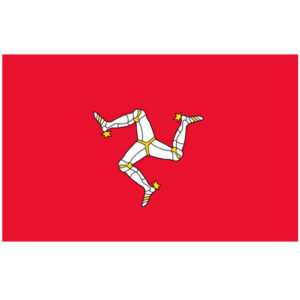For more information on deferred tax, see Deferred Tax.
Net Tax Expense
Given the financial accounting income or loss figure is a below the line (ie after-tax) figure, Article 3.2.1(a) of the OECD Model Rules provides that the net tax expense needs to be added back (ie it will increase Pillar Two GloBE income assuming it is a positive figure).
The net tax expense is made up of:
• Any covered taxes accrued as an expense or included in the income tax figure in the accounts as current or deferred tax, including covered taxes on income that is excluded from the Pillar Two GloBE rules. For more information on covered taxes, see Covered Taxes.
Note that withholding taxes are not classed as covered taxes for this purpose and there is no adjustment to Pillar Two GloBE income.
• A deferred tax asset attributable to a loss for the fiscal year. In this case (unlike the other adjustments), this will result in a negative adjustment (ie reducing Pillar Two GloBE income/increasing the loss).
This is because, in the case of a loss, the deferred tax asset would have been created:
Dr Deferred Tax Asset (Balance Sheet)
Cr Deferred Tax Expense (P&L)
This would be a negative tax expense.
• A qualified domestic minimum top-up tax accrued as an expense. For more information, see Qualifying Domestic Minimum Top-Up Taxes
• Any taxes under the Pillar Two GloBE rules that are included as an expense
• Any disqualified refundable imputation tax included as an expense. These are generally taxes that are refundable on the distribution of a dividend or creditable against other taxes.
Excluded Dividends
As the financial accounting income or loss figure is a below-the-line figure, dividends are generally included in this amount. However, for tax purposes, many countries have some form of participation exemption for intra-group dividends (with differing requirements in terms of shareholdings and length of ownership).
Article 3.2.1(b) of the OECD Model Rules applies a standard exemption for certain dividends similar to a participation exemption.
Dividends excluded are generally dividends (or other distributions on shares) where the MNE group holds 10% or more of the ownership or had held ownership for more than one year or more.
Dividends on short-term portfolio shareholdings and from investment entities that have made a taxable distribution method election are excluded aside from portfolio shareholdings (defined as less than 10% of ownership) held for at least one year.
For more information on the Taxable Distribution Method Election, see Investment Funds and Pillar Two.
As a simplification measure, Article 3.5 of the OECD Administrative Guidance provides that MNE Groups can for each Constituent Entity elect to include dividends from all their Portfolio Shareholdings (including long-term Portfolio Shareholdings) in their GloBE Income or Loss calculation. This is a Five-Year Election.
Excluded Dividends & Mismatches
Article 2.3 of the
OECD Administrative Guidance also includes an anti-avoidance rule for excluded dividends. In particular, it applies to hybrid-mismatch situations, where a financial instrument (such as redeemable preference shares) may be treated as debt in one jurisdiction but equity in another.
Given excluded dividends are not included in GloBE income under the GloBE Rules, this would allow a payor jurisdiction that treated the instrument as debt a potential tax deduction for the interest, whilst the treatment as a dividend in the recipient jurisdiction would be an excluded dividend.
As such, the Model Commentary will be amended to make it clear that MNE Groups subject to the same Acceptable Financial Accounting Standard must consistently apply the relevant standard uniformly to all instruments to prevent asymmetrical outcomes. The treatment applied by the issuer should be applied by both the issuer and the holder for GloBE purposes.
Excluded Dividends and Compound Financial Instruments
Article 2.3 of the OECD Administrative Guidance provides a special rule for Compound Financial Instruments. These are non-derivative financial instruments that contain both equity and liability components.
IAS 32.28 requires each component to be classified separately by the issuer. The holder accounts for these instruments under
IFRS 9.
Only the amounts received/accrued on the equity component would be Excluded Dividends for GloBE purposes.
Excluded Equity Gains or Losses
This includes:
• Changes in the fair value of an ownership interest. This relates to accounting policies that apply to financial instruments which revalue assets and liabilities at their current market value.
These are excluded from Pillar Two GloBE income under Article 3.2.1(c) of the OECD Model Rules if they were taken through the profit and loss account. If the fair value gains or losses were included in Other Comprehensive Income they would have been excluded anyway.
• Profits or losses from an ownership interest under an equity method of accounting.
The equity method of accounting is a method of accounting for holdings in entities that are not subject to consolidation. Generally, this applies when the equity interest is less than 50%. These entities aren’t generally controlled by the MNE group and therefore aren’t constituent entities (aside from certain Joint Ventures).
As the equity method of accounting brings in the proportionate share of the entity’s income or loss into the parent company’s financial accounts, this needs to be excluded. However, see the Equity Investment Inclusion Election.
• Gains and losses from the sale of an ownership interest (except a shareholding with ownership of less than 10%) are excluded under Article 3.2.1(e) of the OECD Model Rules. Similar to the treatment of excluded dividends (above), many jurisdictions have a participation exemption for gains on group shareholdings.
The Pillar Two GloBE rules seek to replicate this by excluding such gains and losses from Pillar Two GloBE income. However, unlike the rule for excluded dividends, the ownership period is irrelevant.
Article 2.2.3 of the OECD Administrative Guidance provides provisions relevant to hedging instruments for currency risk related to to a net investment in a foreign operation.
In particular, a Filing Constituent Entity can make a Five-Year election to treat foreign exchange gains or losses reflected in a Constituent Entity’s Financial Accounting Net Income or Loss as an Excluded Equity Gain or Loss where:
- the foreign exchange gains or losses are attributable to hedging instruments that hedge the currency risk in Ownership Interests other than Portfolio Shareholdings;
- the gain or loss is recognised in other comprehensive income at the level of the
Consolidated Financial Statements; and - the hedging instrument is considered an effective hedge under the Authorised Financial Accounting Standard used in the preparation of the Consolidated Financial Statements.
Included Revaluation Gains or Losses
Where an entity values assets under a revaluation method for accounting purposes, its value in the balance sheet is revalued to the current market value (less accumulated depreciation and impairment losses).
Revaluation gains are generally included in Other Comprehensive Income whereas revaluation losses are taken through the profit and loss account.
This would mean that revaluation gains (as they are reflected in Other Comprehensive Income and not the Profit and Loss account) would generally not be taken into account for the purposes of Pillar Two GloBE income (thus potentially increasing the Pillar Two GloBE ETR).
As such, under Article 3.2.1(d) of the OECD Model Rules, all revaluation gains or losses that are included in Other Comprehensive Income and aren’t taken through the P&L are required to be included in the Pillar Two GloBE income or loss.
An election is available so that the revaluation gains or losses reflected in Other Comprehensive Income aren’t included in Pillar Two GloBE income and would only be reflected when the asset is sold.
Asymmetric Foreign Currency Gains or Losses
These are generally currency conversion differences that arise due to differences in the currency used for accounting and tax purposes.
Generally, foreign currency gains and losses in the constituent entity’s financial accounts are included in Pillar Two GloBE income.
However, adjustments are made under Article 3.2.1(f) of the OECD Model Rules where foreign currency gains and losses arise due to differences in the currencies used to calculate taxable income or loss and a constituent entity’s financial accounting net income or loss:
• Where transactions in the accounting currency give rise to a taxable gain because the tax currency is different, the foreign currency gain or loss is included in the financial accounting net income or loss.
• Where transactions in the tax currency give rise to an accounting gain or loss due to the accounting currency being different, the accounting foreign currency gain or loss is excluded from the financial accounting net income or loss.
• Where transactions in a third currency give rise to a foreign currency gain or loss in the accounting currency they are excluded from the financial accounting net income or loss.
• Similarly, where transactions in a third currency give rise to a foreign currency gain or loss in the tax currency they are included in the financial accounting net income in the case of a gain (and excluded in the case of a loss).
Foreign Currency – Example
Company 1 is subject to the Pillar Two GloBE rules. It uses euros as its tax currency and yen as its accounting currency.
At the beginning of the tax year, it has a bond with a value of 15,000,000 yen. The exchange rate is 1(euro):150 (yen). For tax purposes, the bond is therefore valued at 100,000 euros.
At the end of the year, the exchange rate is 1:180.
In the accounts, the value of the bond is still 15,000,000 yen. However, for tax purposes, the value of the bond is 83,333 euros. The foreign exchange loss of 16,667 euros is taken as a tax-deductible expense by Company 1.
Assume other income of 50,000 euros (or 9,000,000 yen).
If the tax rate was 20%, the tax in euros would be:
Income = 50,000 euros
Foreign currency loss = (16,667)
Taxable Income = 33,333 euros
Tax would be 6,667 euros
The ETR would therefore be 20%.
However, for accounting purposes there is no deduction for the forex loss as the currency used to prepare the accounts is the yen. Therefore, the ETR would be:
Income = 9,000,000 yen
Tax (6,667*180) = 1,200,060 yen
ETR = 13.33%
This, therefore, has the potential to affect the Pillar Two GloBE ETR, given the Pillar Two GloBE income calculation begins from the financial accounting net income figure. As such, an adjustment is required for Pillar Two GloBE purposes.
The amount of the forex loss for tax purposes is converted to yen at 1:180 and included as a reduction in financing accounting income for Pillar Two GloBE purposes (3,000,060 yen). The ETR then becomes 5,999,940/1,200,060 = 20%, the same as in the tax functional currency.
Policy Disallowed Expenses
Illegal payments, including bribes and kickbacks, are added back in the Pillar Two GloBE income calculation under Article 3.2.1(g) of the OECD Model Rules, just as they generally would be under a country’s domestic tax law. A payment is illegal if it is illegal under the domestic law of the country of the constituent entity or the UPE.
Fines and penalties are only added back if they are 50,000 euros or more (or an equivalent amount in local currency). Note that interest on late payment of tax is not considered a fine or penalty.
It’s worthwhile noting that given the 50,000 euros materiality threshold can be applied based on local currency this could impact on the Pillar Two GloBE tax base (and therefore the Pillar Two GloBE ETR) if the local currency rose or fell compared to the euro.
For instance, if the local currency fell, this could result in the actual threshold in euros being less than 50,000 euros. This may then lead to an additional increase in the Pillar Two GloBE tax base (and a reduction in the Pillar Two GloBE ETR).
The OECD recommends in its Commentary to the Pillar Two Model Rules that countries that apply the threshold in local currency also implement measures in their domestic legislation to ensure this does not happen.
Prior Period Errors
If there was an error in the accounts (or a change in accounting policy) in a previous year that impacts on the Pillar Two GloBE income or loss, Article 3.2.1(h) of the OECD Model Rules provides that this must be adjusted in the Pillar Two GloBE income calculation.
For accounting purposes, the adjustment would generally be by way of an amendment to the opening equity in the balance sheet.
For Pillar Two GloBE purposes, the Pillar Two GloBE income calculation is adjusted. For instance, if deductible expenses were not included, this would be represented as a decrease in opening equity and a decrease in Pillar Two GloBE income.
Note, given Pillar Two GloBE income isn’t based on the consolidated financial statements, but on the accounts of the Group entity, even if errors were between group members and therefore didn’t affect the consolidated accounts, they would still need to be taken into account for Pillar Two GloBE income.
Errors that relate to a decrease in covered taxes of 1 million euros or more are treated differently. For more information, see Post-Filing Adjustments.
Errors that relate to periods before the implementation of the Pillar Two GloBE rules are not taken into account.
Accrued Pension Expenses
Again, this adjustment looks to try and replicate the domestic law tax treatment in many jurisdictions.
Generally, pension contributions are tax-deductible when paid, as opposed to the amount accrued in the financial accounts.
Article 3.2.1(i) of the OECD Model Rules follows this treatment.
Therefore, if the amount paid is different from the amount accrued in the income or loss in the financial accounts, the difference is adjusted in the calculation of Pillar Two GloBE income.
Note that Article 2.5.3 of the OECD Administrative Guidance clarifies that this only applies to the pension expenses of pension plans that are provided through a Pension Fund. Pension expenses that are accrued for direct pension payments to former employees should be taken into account at the same time and in the same amount as they are accrued as an expense in the computation of Financial Accounting Net Income or Loss.
Debt Releases
The GloBE Rules and Commentary do not include an exemption for debt releases. For financial accounting purposes the release of debt is likely to be treated as income (ie Dr Creditors, Cr P&L). However, in many jurisdictions, a domestic tax exemption. This could therefore push the GloBE ETR down leading to top-up tax.
Article 2.4 of the Administrative Guidance provides that certain debt releases under various corporate rescue situations are excluded from GloBE Income subject to an election by the filing constituent entity.
This applies where the relevant procedure is:
- undertaken under statutorily provided insolvency or bankruptcy proceedings, that are supervised by a court or other judicial body in the relevant jurisdiction or where an independent insolvency administrator is appointed;
- where the creditor to the debt release is a third-party and it is reasonable to conclude that the debtor would be insolvent within 12 months but for the release of the third-party debts under an arrangement. Where this is the case, relief will apply to both third-party and related-party debts released, provided the debt release of any related-party debt is undertaken as part of the same arrangement as the release of the third-party debt; or
- where the creditor to the debt release is a third-party and, immediately before the debt release, the debtor’s liabilities are in excess of the fair market value of its assets. Where this is the case and the requirements above are not met, relief will apply to third-party debts but only to the extent of the lesser of (i) the excess of the debtor’s liabilities over the fair market value of its assets (determined immediately before the debt release), or (ii) the reduction in the debtor’s attributes under the tax laws of the debtor’s jurisdiction resulting from the debt release.
Ownership Interests
Ownership interest is a key concept within the GloBE Rules and is used not only for determining MNE group membership and a Parent Entity’s Allocable Share of Top-up Tax, but also determines whether there are excluded dividends or excluded equity gains.
An ownership interest is defined as an equity interest that carries rights to the profits, capital, reserves, or voting rights of the entity.
An excluded equity gain, for instance, is the disposal of an ownership interest (except for a portfolio shareholding).
This is defined as an ownership interest that carries rights to less than 10% of the profits, capital, reserves, or voting rights of the entity at the date of sale.
Therefore, in order to be an ownership interest ownership needs to be held as an equity interest. This is an interest that is accounted for as equity under the financial accounting standard used in the preparation of the Consolidated Financial Statements.
Shares or other ownership interests may carry different rights. For instance, a class of shareholding may carry a right to 10% of profits but only 5% of the capital and reserves.
Certain definitions in the Model GloBE Rules apply specific requirements. For instance, the definition of a POPE in Article 10 of the OECD Model Rules requires an ownership interest with the right to more than 20% of profits.
Other definitions in the Model GloBE Rules apply to the entire ownership interest (eg A minority-owned entity is defined in Article 10 of the OECD Model Rules as an entity where the UPE owns 30% or less of the ownership interest but the UPE holds the controlling interest)
Where there is no specific ownership right provided in the rules, the different rights should all generally be treated equally.
For example, Company 1 issued two classes of shares, A shares with a right to profits and B shares with a right to capital in liquidation.
Parent 1 owned 60% of the A shares and 20% of the B shares.
Parent 2 owned 40% of the A shares and 80% of the B shares.
Parent 1’s ownership interest would be 40% (50% * 60% + 50% * 20%).
Parent 2’s ownership interest would be 60% (50% * 40% + 50% * 80%).
Preference Shares and Ownership Interests
In many cases, preference shares are only included in equity if they are in substance equity, eg, there may be no obligation to pay a dividend or redeem the shares.
They are therefore unlikely to be included in capital and reserves (or have a right to them) in IFRS compliant accounts because the characteristics of preference shares are usually more akin to a financial liability and therefore accounted for as a creditor.
The treatment for IFRS purposes depends on the extent of the obligations (also see Compound Financial Instruments):
| Instrument | IFRS Treatment |
| Ordinary Shares | Equity |
| Redeemable preference shares + non-discretionary dividends | Liability (obligations to both pay dividends and repay Principal). |
| Redeemable preference shares + discretionary dividends | Liability for Principal and equity for dividends (obligation to repay Principal but no obligation to pay dividends). |
| Non-redeemable preference shares + discretionary dividends | Equity (no obligations to repay Principal or pay dividends). |
| Non-redeemable preference shares + nondiscretionary dividends | Liability (no obligation to repay Principal but an obligation to pay dividends). |















